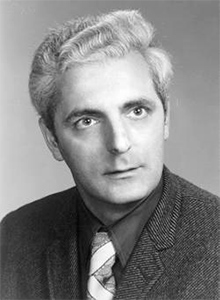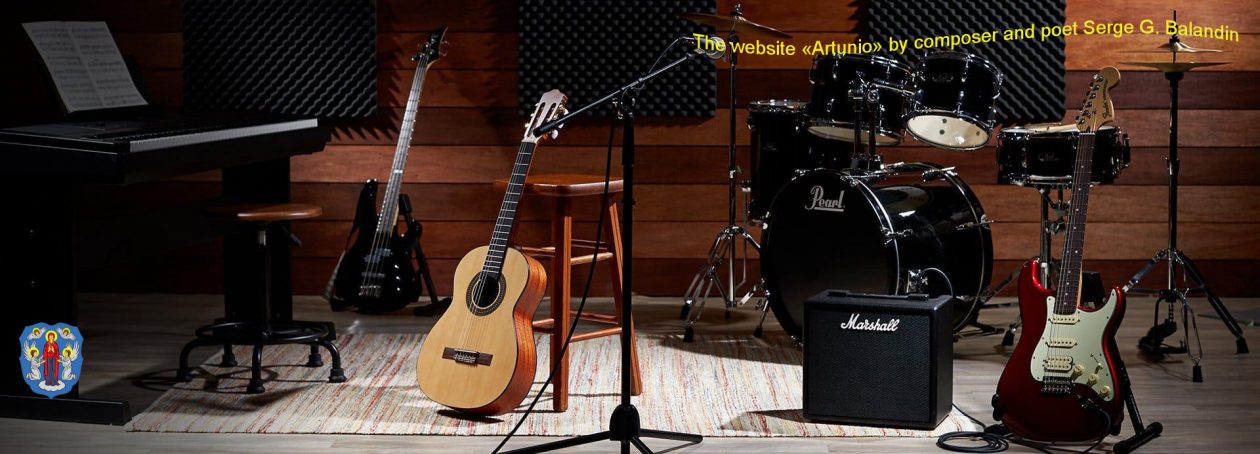
EMINENT PERSONS: ROBERT MOOG
Robert Arthur Moog, or simply Robert Moog (Bob Moog) was born in Flushing, USA, on May 23, 1934.
Young Bobby grew up, and, like a true New Yorker, sold his soul to the power of rapidly changing genres and styles of music. He was fascinated by new sounds, generated by modern musical instruments thanks to the advanced technologies of the 20th century.
Back in the 1920s, Soviet inventor Lev Termen (Leon Theremin) assembled the first electric musical instrument, which he called «theremin». Moog decided to invent something more stunning, having inscribed himself in gold letters in the Alley of Glory, without forgetting about that spiritual satisfaction from realizing himself as the pioneer of synth making and, of course, about his financial future waving with a happy sum of controlling interest in front of him.
In order to translate his ideas into reality, Bob needed knowledge, which he craved for, having successfully finished the school with an in-depth study of the technical and human sciences in 1952. In 1957 he graduated from the College of New York City University with a bachelor’s degree in physics. Progress was evident, and Robert raced further into science, but was overtaken by other experimenters with sound.
Meanwhile, Karlheinz Stockhausen, Janis Xenakis and other composers with their companions diligently glued the magnetic tapes with recordings backward searching for a new sound, creating it by the method of layering overtones on the recorded audio.
And Robert won new regalia in the chosen field, deservedly received a bachelor’s degree in electrical engineering from Columbia University and a Ph.D. in Applied Physics at Cornell University. He was also awarded the honorary doctorate of the Polytechnic Institute of New York City University and the Lycoming College, Pennsylvania. However, we ran a little forward, shamelessly forgetting about the fact that in the process of studying the 19 year old Moog had already begun to earn quite a lot on the abovementioned theremin units of Lev Termen, having constructed them in his own way and having published this work with a detailed description of the unit in a specialized journal. The next couple of years, Bob received a good profit, founded R.A. Moog Co together with his father, selling the set of details from the DIY series for assembling Moog-style theremins– the kits cost about $50. Robert constantly kept his hand on the pulse of electronic achievements, learning the news from the laboratories of Columbia University, Princeton, Raymond Scott’s… He also met the composer Herbert Deutsch, a connoisseur and creator of experimental music, with whom he exchanged the vital information. By summer of the 1964 Moog had already presented a voltage controlled oscillator (a system that oscillates, that is, its indicators are periodically repeated in time), and an amplifier. Bob raised the bar, aiming at more complex academic music, starting to create the first prototype of a modular synthesizer (monophonic keyboardless module with a doorbell instead of a trigger). Since the hardware part of the synthesizer at this stage of its development was, let’s say, dull and primitive, Moog and Deutsch ran to the University of Toronto to visit the music department there to continue their research in the field of sound alteration. Robert was prompted to use an electronic chip in the form of a voltage controlled filter, which until that moment Moog didn’t actually have. A bit later, Vladimir Ussachevsky — at that time a composer in Columbia-Princeton — suggested the concept of the ADSR envelope generator. After the ideas were shared and implemented, additional gadgets were added, such as a noise generator, mixers, which are now taken for granted, and some other extra features. Considering the year when the innovation was presented at the AES conference, no wonder that its promotion went on with a squeak. The synthesizer was ready for production, but few wanted to buy a novelty. Only thanks to the kind reviews in the lots of positive gossiping among musicians both pro and amateurs, sales were gaining momentum. Given the fact that for a consumer who was not used to this kind of innovation, it was still an exotic, for which not everyone could risk his money… This first synth was a user nightmare. Because of incorrect assembly of bulky modules, the consumer, who had no idea how to configure them, didn’t hear anything at the output! But how to assemblethem, if there were no instruction or guiding books, and the people lingered with connections until they accidentally got the required combination. In order to promote the offspring, Moog and Deutsch organized seminars demonstrating proper and correct exploitation and effects which can be achieved. Moog also wrote pieces on this topic in «Electronic Music Review». But the process kept on going, and it was no longer possible to stop it. To begin with, Moog changed his company name to «Moog Music» (1972), which later bought the brand «Norlin», but Bob left it because of disorder in the management and marketing of products. 1978 was marked by Moog’s cooperation with the new brand «Big Briar», issuing thereminsunder the brand name «Etherwave». By the end of the century, the company had begun to produce analogue effect pedals «Moogerfoogers»… Then Moog signed a partnership agreement with «Bomb Factory», a manufacturer of music plug-ins supplied with the recording studio. In 1993 «Moog Music» was shut down, and Robert had no rights to release products under his own name. A little later, Don Martin bought the rights to this brand. After the lawsuit against Don Martin, «Big Briar» received the right to «Moog Music» brand and launched a new version of the Minimoog — «Minimoog Voyager». We could retell all the titles and details of the Sound Master endlessly and tediously, but we would like to dwell on the detail that isn’t visible at first sight, which can be perceived only by people who are not zombified by loud names — it is the fact that Moog synthesizer is a product of the collective work of creative people. However, there is no single inventor, for example, of the radio as well. There are discoveries in various fields of science that belonged to different people, and there is a person who put them together with no need to make his own discoveries. Therefore, thank you, Mr.Moog, from musicians of all countries, all the Moog fans and devotees for your persistence in achieving the goal. Owing to his efforts, the synthesizer became an accessible and easy-to-use musical instrument with the interface friendly to any beginner. Robert Moog died on August 21, 2005 at the age of 71, in Asheville, North Carolina, USA.
Serge G. Balandin
Published: 17:29 | 10.06.2016
Views: 174
